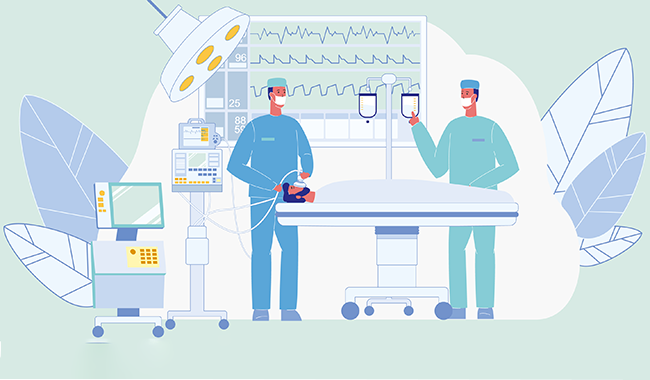
This week, MGMA released their 2023 compensation and production survey data, and it is worth taking a closer look at the collection of anesthesia benchmarks to better grasp the challenges universally faced by health systems today. Rising anesthesia costs have been closely tracked by ECG and the industry at large, and the trend has prompted systems to scrutinize the way they deploy anesthesiologists, CRNAs, and anesthesia assistants across care settings.
After reviewing these benchmarks, we’ve summarized three prominent trends that align with our day-to-day market observations.
There is no avoiding rising costs for general anesthesia services.
CRNA compensation has increased over the past five years, with a compound annual growth rate (CAGR) of 2.88% for the period of 2017 to 2022 and a trendline that was uninterrupted by the pandemic. But based on market observations, we still expected to see a material jump in these updated benchmarks—and if anything, the data exceeded expectations.
- CRNA compensation spiked by 8.3% at the median, from $198,000 to $215,000, and this steady upward trend has been the primary driver for increased anesthesia stipend requests from private groups.
- In fact, in certain markets, groups are exploring using more physician-only coverage models since the math underlying the legacy 2:1 and even 3:1 CRNA-to-physician ratios has been upended.
But while the CRNA compensation jump was predictable, the magnitude of the jump for general adult anesthesia is the real headline. Adult anesthesia witnessed a 6.8% increase at the median, jumping from $467,000 to $499,000. This close alignment in rising anesthesiologist and CRNA compensation is driven by two compounding factors:
- Systems are requiring additional anesthesia coverage as needs expand into evenings, weekends, and non-operating-room-anesthesia (NORA) sites.
- There is a shortage of providers, as anesthesiologists continue to retire faster than new trainees can replace them.
It’s a painful story for pain management.
Pain management has always been an outlier within anesthesia. Pain management providers work more in an outpatient setting, they bill primarily WRVUs instead of ASA units, and their compensation plans are far more commonly production based than their anesthesia peers. Pain management production fell by 9.2% at the median, and for a production-based specialty, that correlated directly with a 7.5% decrease in compensation at the median.
This could be attributable to a number of factors, including visit durations that cannot be as easily truncated as other specialties; advances in therapeutics and at-home devices that require fewer follow-up visits; and additional scrutiny of pain procedures and an uptick in authorization denials by insurers. Whatever the underlying cause, the gap between general anesthesia and pain management compensation has never been greater.
Subspecialty stipends are increasingly differentiated by local market dynamics.
Pediatric Anesthesia
For the past five years, we have watched as pediatric anesthesia benchmarks came from behind to overtake their adult peers, resulting for the first time in premiums for pediatric anesthesia in markets across the country. But this year’s data shows a market correction that realigns the two, with pediatric anesthesia remaining relatively stable around $483,000 while adult anesthesia made the aforementioned jump.
Some of this year-over-year variability should be taken with a grain of salt due to limited subspecialty sample sizes, but we see adult and pediatric general anesthesia as relatively aligned, with pediatric premiums only supportable based on acute local market shortages.
Cardiac Anesthesia
Cardiac anesthesia has long had a premium that was clearly supportable by market benchmarks, and this year is no different, even if the gap between general and cardiac softened. The real story here is in the market variation—cardiac anesthesia stayed flat at the median but increased by 9% and 10% at the 75th and 90th percentiles, underscoring that when there is a shortage in the market, the market is forced to adjust.
While benchmarks provide helpful guidance about an appropriate national market compensation range, all compensation is ultimately local. We are seeing large variations in premiums associated with both cardiac and transplant anesthesia, ranging from $25,000 to $75,000, and even more for pediatric cardiac anesthesia, where the supply of providers simply cannot keep up with market demand.
A Murky Future
Ultimately, this data underscores how dynamic the market is right now for anesthesia services. The dangerous confluence of rising provider costs, increased coverage demands in less clinically efficient settings, and reimbursement challenges tied to lackluster Medicare rates and the downward pressure on independent groups stemming from the No Surprise Act have created challenges for health systems and private groups alike.
And unfortunately, there is no clear end for these trendlines.
Edited by: Matt Maslin

